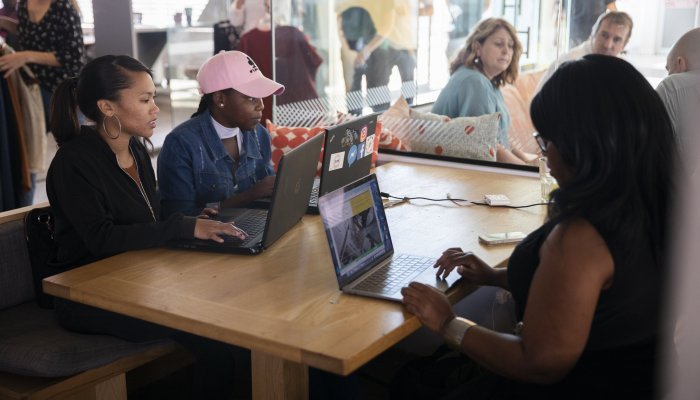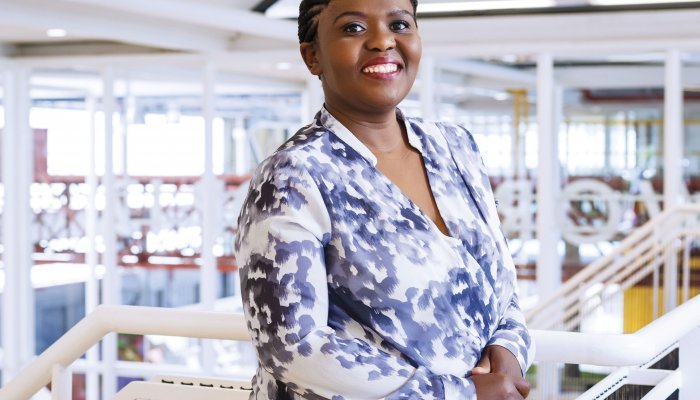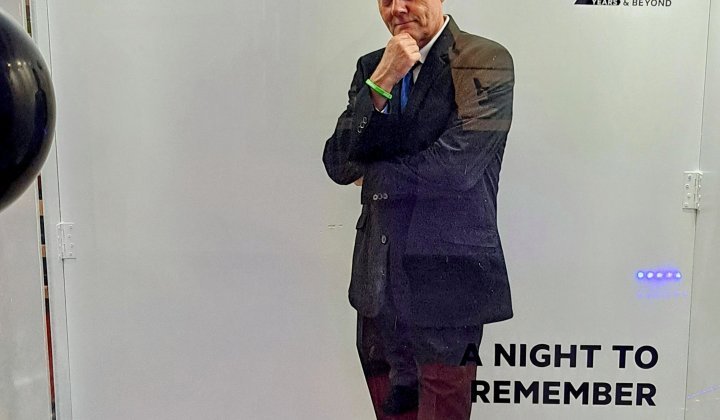Inequality of opportunity is hampering our ability to thrive as a society, and it deprives millions of people (especially black women) the dignity of work. This is the view of Baratang Miya, founder and CEO of GirlHYPE, an NPO that aims to empower young women and girls in technology.
“The challenges and struggles I faced when I got to university made me realise that I wasn’t the problem,” she says. “The issue was in schools. I knew then that the digital gap that existed between races, and between the rich and the poor, needed a civil intervention.”
In 2003, when her peers were looking for jobs after graduation, Miya couldn’t get one. Exhausted from studying for her post-graduate diploma, and dealing with post-partum from her pregnancy, she started GirlHYPE instead.
“I just went to Cape Town schools and asked them if I could start a computer club focusing on girls and they agreed,” she says. “What was interesting was that the teachers couldn’t use computers themselves, so they were happy to offer me access to their labs. We were the change they wanted to see.”
Job security and better careers
The first two years were “a nightmare financially”. It’s why she changed the model to become a government vendor and partnered with organisations willing to let her implement programs for them. It’s also why she continues to find that partnering with mentors, who organise field trips or company visits, plays a huge role for the girls.
“I got a content design strategy contract for the City of Cape Town’s Smart City Project,” she says. “At the same time I was also able to implement the British Council’s Zero Carbon City project with 24 schools in Cape Town. That’s when the Department of Trade and Industry came on board as a sponsor, and the rest is history.”
GirlHYPE offers After Schools Tech Clubs, CodeClubs at universities during the school holidays, and other classes at its GirlHYPE Campus office. Miya believes that these appeal to its students because it offers a chance for job security and better careers, especially given the high unemployment rate and the fact that young women are the ones often left behind.
“GirlHYPE was built on showing girls multiple career pathways in tech,” she says. “Our programs embed lifelong learning in skills like time management, public speaking, entrepreneurship, and communication that prepare girls for the future. We also have a work-readiness program aligned with the incentive of job placements when you finish and qualify.”
Impact in the industry
Still, it’s been a challenge for the organisation to change the strategy to focus on job-readiness programs and future skills that have been highlighted as relevant by the industry. It meant reducing its student intake to 200 per year.
...talent isn’t only found at universities
“We have grown so much over the years and 2019 came with so many changes,” she says. “We introduced a course for employed women wanting to switch careers to tech. We also employed 80 students for an internship and refocused our priorities to have an impact in the industry, which was huge growth for us.”
The goal is to shift perceptions of who is and isn’t skilled, especially in the tech industry, and to show that talent isn’t only found at universities. This wouldn’t be possible without the community of women and mentors who care about each other and “provide a safe space where students can fail with no judgement and have fun at the same time”.
“2019 was about us redefining our vision and implementing a new strategy,” Miya says. “Impact is our number one priority now and we measure ourselves on jobs created. Our second priority, which used to be our primary objective, is exposing as many girls to tech by enrolling 120 girls to train them as leaders of the future. They, in turn, form their own code clubs.”
Changing the culture
Looking ahead, there’s a lot of work to do. Miya laments the fact that the STEM (science, technology, engineering, and math) industry is still “very white and male-dominated in leadership positions and entrepreneurship” and not inclusive of women, even though women are “making huge strides”. She has no doubt that the more women begin to change the culture, the more the numbers of women in STEM will increase.
“Exposing girls to careers in tech and encouraging them to choose STEM as their first choice was my biggest dream,” she says. “Now, the biggest digital divide is around skills audits. It’s not just local; it’s a global phenomenon. It’s about getting more women into tech and closing the gender gap. Women choose tech careers, but they don’t stay because the culture is still very patriarchal. That’s why our strategy has to also incorporate programs that are suitable for challenges faced by women in workspaces.”
Miya believes that solving these and Africa’s many other challenges is an opportunity, especially for the youth. That’s why GirlHYPE wants to create a pipeline of tech and engineering skills. It’s also why she’s in the process of giving more power to the girls to run the organisation themselves, confident in the knowledge that inclusivity will bring the kind of diverse innovation the planet needs.
I’d like for the world to see that Africa isn’t their charity case.
“The world has its own picture of who Africa is and what we need,” she says. “I’d like for the world to see that Africa isn’t their charity case. We have a voice to represent ourselves, skillsets to solve global problems, and the knowledge to compete globally. That’s why I’m trying to create different platforms and partner with those who value Africa and curate African content designed for global consumers.”
Future skills
Still, there are also existential concerns about the rise of artificial intelligence and how we as humanity will define acceptable norms and standards to govern the production of technology. Miya believes that ethics, policy, and human rights in a complicated world of machine learning will be big discussions. She also believes that there’s no point talking about future skills if we don’t think about what careers will even exist.
“I’m educating myself and the team to position ourselves as partners in the ecosystem, and a solution to the inclusion of women and girls to available opportunities,” she says. “I’m also advocating for women to be tech producers and not just tech consumers. The future is female and we cannot create that future without including half the world’s population.”
Number crunching
For Miya, seeing the girls being employed straight from high school has been the greatest achievement. This wouldn’t be possible without the help of its 15 full-time staff and lots of volunteers.
“We have reached more than 200,000 girls in the past 16 years and 80% of them have reported that they now consider careers in tech as their first choice,” she says. “We also have fully committed corporate partners we work with.”
Types of tech
GirlHPYE offers Scratch, Alice, and Greenfoot for girls aged 9 to 13. It’s also just introduced Artificial Intelligence and Machine learning alongside HTML, CSS, Java, as well as its most popular offerings of Javascript and Phython.
“We have never charged for our programs,” she says. “We apply for funding through grants and corporate partnerships and consulting work we do through working with IT companies. We also partner with Technovation, a global competition for schoolgirls that teaches them tech entrepreneurship."






